
Screw Conveyor - Auger Flight- Screw Sectional Flight - Auger Conveyor - Sectional Flight - Auger Screw Conveyor - Screw Auger - Flight Sectional - Screw Feeder - Sectional Flight Auger - Hardfacing Screw Conveyor - Helix Flight - Sectional Flight Forming - Custom Helix Flight - Helical Flight - Helicoid Flight - Screw Conveyor Flight - Shafted Screw Conveyor - Mixer Powder Machine - Flighting - Screw Conveyor Parts - Auger Conveyor - Shaftless Screw -Conveyor Screw - Spiral Pipe - Spiral Tube - Conveyor Screw - Screw Conveyor Auger - Screw Flights - Auger Screw - Conveyor Screw - Screw Dosing - Shaftless Screw Conveyor - Screw Coveyor Auger - Screw Mixer Machine - Screw Conveyors - Auger Screw - Helicoid Flight - Ribbon Flight - Shaftless Flight - Conveyors Screw - Auger Flighting - Mixing Screw - Screw Conveyor Supplier - Screw Conveyor Manufacting - Screw Conveyor Manufacturer - Screw Conveyor Systems - Helicoid Screw Manufacturer - Centerless Screw - Screw Conveyor Manufacturers - Screw Flight Manufacturers - Heat Transfer Screw Processors -Screw Conveyor Heat Exchangers
Types of Screw Conveyor Auger, Types of Auger Flights (Screw Flights, Sectional Flights), Screw Conveyors Configuration, Screw Conveyor Application
Types of Screw Conveyors & Screw Flight (Auger Flight), Uses and Applications
Quality Auger Flights or Screw Flights, (Sectional screw flights) designed and manufactured by our Experts.
We are experts Auger Flight & Screw Flight manufacture (Sectional Flights). Our Auger Flights are the best in the world, due to our revolutionary production methods – the perfect fit every time!
Our commitment is to deliver Screw flights which leave no gap on the Center tube, matching Flight Ends, and provide the lowest cost installation/fabrication time in the market – Saving you time and money!
We specialise in delivering Sectional Flights (Screw Flights) and Fully Fabricated Engineered Solutions to the Mining, Quarry, Agriculture and Civil Construction markets.
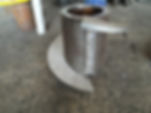
Screw flight Stainless Steel 304
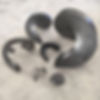
Miscelaneous Screw Flight Pitch

Smaal screw flight manufacture A36

Screw flight Stainless Steel 304
Bega Screw Conveyor is one of the pioneer companies in the “custom made” production of Screw Flights (Auger Flights). Our mission is to provide Screw Flights (Auger Flight) of any size you require, just fill out our Screw Flight form and send it to us and a Bega advisor will contact you. We have specialized machinery designed and manufactured by our engineers to manufacture Screw Flights, so we have mastered the engineering to manufacture them. There are multiple combinations of Screw Flights (Auger Flights) measurements, from very large outside diameters with very small inside diameters, large pitch, thin and thick plate thicknesses, rest assured that our engineering team will know how to solve it and offer you the product you are requesting. We are safe, because we have the experience, the knowledge and the technology. Put us to the test.
Our screw flight forming machine must be configured for combination of outside diameter, inside diameter, pitch, plate thickness, steel type, to get the perfect Screw Flight (Auger Flight). In order to form the screw flight with the final measurements, it is necessary to cut the Blank with the exact measurements for each combination of parameters. In addition to our technology to form screw flights, we have developed software (Bega Software Auger Flight) that uses mathematical algorithms to obtain the cut that is always larger in outer diameter than the diameter already formed. For this, it is necessary to place the final measurements of the screw flight (Auger Flight) and our Bega Software Auger Flight will reveal to us which is the correct cutting diameter, to later configure our Bega Flight Forming Machine.
Our Screw Flights (Auger Flight) are simply perfect, when assembling them you will not have union problems, since they all "click" when placed on the shaft (perfect fit), Our tolerance margins exceed the CEMA standard. We can make shipments to other countries without any problems, our packaging complies with the packaging standards necessary for export.

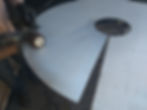
Blank
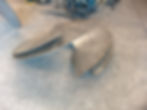
Auger Flight
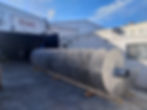
Screw Complete

Blank
Types of Auger Flights & Screw Flight (Sectional Screw Flight Types), Uses and Application

Screw conveyor Standar Screw
Flight
Auger Flight or Screws sectional flight with a pitch spacing equal to the diameter are considered standard and are suitable for most screw conveyors of conventional horizontal design.
.

Screw Conveyor Tapered Flight
Auger Flight Tapered or Screw Tapered flight spirals provide a continuous incremental change in swept volume of the screw conveyor auger. This promotes even drawdown in a full hopper situation. Tapered flights leave residual material in the screw conveyor unless the casing is tapered to suit.
Screw Conveyor Short Pitch Flight
Short pitch auger flight or short pitch screws flight are used in inclined screw conveyors. They are also used to control the feed at the inlet and to reduce flushing of free flowing materials. The shorter the pitch the more efficient is the screw augers.
Screw Conveyor Paddles
Paddles are set in a helical form around a square or round centre tube to form a segmented spiral. They are used in mixers and pug mills to mix and condition dry products when liquid is added during the process.
Variable Pitch Flights
The screw conveyor with Variable pitch auger flights are used to control the amount of material drawn down along the length of a hopper. By increasing the pitch at each flight along a screw you can incrementally increase the volume of product that is allowed to enter the screw.
Screw Conveyor Double Start Flight
The screw auger conveyor with Double start auger flights are used to accelerate the conveying process at the conveyor inlet and even out the pulsing effect at the outlet. They are also typically used in drilling and post-hole augers to equalise the torsional forces on the screw auger.
Screw Conveyor Notched and Folded Flights
The screw augers with Notched and folded auger flights provide a more aggressive mixing action where material that passes through the notch is lifted and mixed with the trailing material. They can also be used for aerating or cooling materials.
Screw Conveyor Notched Flight
The screw conveyors with Notched auger flights are used to provide a gentle mixing action. Notched flights are useful in blending different materials during the conveying process.
Screw Conveyor Centreless Flights (Shaftless)
The Screw conveyor Centreless flights (Shaftless) are used for extremely sticky or fibrous materials that tend to wrap around or build up on a centre pipe.


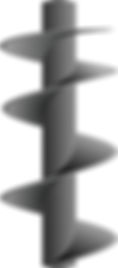



Screw Conveyor Hollow Spiral Flight
The screw conveyor with Hollow spiral flights (auger flights) are used to pass heating or cooling liquids around the helix. Typically both the hollow centre pipe and the hollow spiral flight are used as a heat exchanger to cool, heat or thaw the material being conveyed.
Screw Conveyor Ribbon Flight
The screw conveyor with Ribbon auger flights with integral support legs are used for sticky or cohesive materials that tend to build up on the flight-pipe interface.
Screw Conveyor Coned Flight
The screw conveyor conical auger flight centres provide a continuous incremental change in swept volume of the screw. This promotes even drawdown in a full hopper situation. Combined with variable pitch the coned screw provides the best possible solution to even hopper drawdown. Standard troughs can be used with coned flights.




Types and Configurations of Screw Conveyors
Horizontal Screw Conveyor

Horizontal screw conveyors are the most widely used type of screw conveyor. Used to convey bulk materials from one part of a process to another, horizontal screw conveyors are available in a wide range of sizes, lengths, configurations and materials of construction.
Screw conveyors are typically designed to convey bulk materials at 15, 30 or 45-percent trough loading, depending upon material characteristics of the specific bulk material. As a general rule, trough loading of 45-percent can be used for light, free-flowing and non-abrasive bulk materials. Trough loadings of 15 and 30-percent are typically used for denser, sluggish and more abrasive bulk materials.
The inlet of a screw conveyor is always control fed by another device such as:
-
Screw Conveyor
-
Screw Feeder
-
Belt Conveyor
-
Rotary Airlock
-
Volumetric or Gravimetric Feeder
The recommended location for the drive unit is on the discharge end of a screw conveyor which pulls the bulk material to the drive end. With this arrangement, each screw section is put in tension as the bulk material is conveyed toward the discharge of a screw conveyor, reducing wear and fatigue on the conveyor components.
Advantages of Using Screw Conveyors
-
Ideal for conveying dry to semi-fluid bulk materials – free flowing to sluggish
-
Cost-effective when compared to other conveying devices such as belt, pneumatic or aeromechanical
-
Efficiently distributes bulk materials to various locations using multiple inlet and discharge points
-
Totally enclosed for dusty, corrosive or hazardous environments
Inclined Screw Conveyor
Inclined screw conveyors typically operate from slightly above the horizontal position to 45-degrees from the horizontal position. Above 45-degrees an inclined screw conveyor is considered a vertical screw conveyor. As the degree of incline increases, conveying efficiency is reduced and horsepower requirements increase due to the effects of gravity and bulk material fall back.
Conveying efficiency is affected by angle of incline, characteristics of the specific bulk material, type of screw conveyor trough and screw pitch. Bega recommends designing screw conveyors using the lowest possible degree of incline for maximum efficiency.
The following are design and construction features to consider when designing an inclined screw conveyor:
-
Incline Screw Conveyor auger Up to 10-Degrees – Loss in conveying efficiency is minimal on inclines up to 10-degrees. A screw conveyor with U-trough and full pitch screw is sufficient for most applications. Loss in efficiency can be overcome by increasing the speed of the screw conveyor, increasing the diameter of the screw conveyor or reducing the pitch of the screw.
-
Incline Screw Conveyor auger Between 10 and 20-Degrees – Loss in conveying efficiency is typically between 10 and 40-percent on inclines up to 20-degrees. A screw conveyor with U-trough and 2/3-pitch screw is sufficient for most applications. Loss in efficiency can also be overcome by increasing the speed or the diameter of the screw conveyor. Additional horsepower is required to overcome gravity and bulk material fall back.
-
Incline Screw Conveyor auger Between 20 and 30-Degrees – Loss in conveying efficiency is typically between 10 and 70-percent on inclines up to 30-degrees. A screw conveyor with tubular housing and reduced pitch screw (1/2 or 2/3) is recommended for most applications. Loss in efficiency can also be overcome by increasing the speed or the diameter of the screw conveyor. Additional horsepower is required to overcome gravity and bulk material fall back.
-
Incline Screw Conveyor auger Between 30 and 45-Degrees – Loss in conveying efficiency is typically between 30 and 90-percent on inclines up to 45-degrees. A screw conveyor with tubular housing and reduced pitch screw (1/2 or 2/3) and larger diameter is recommended for most applications. Increasing the speed of the screw conveyor is also required. Additional horsepower is required to overcome gravity and bulk material fall back.
Pitch Efficiency
The Pitch Efficiency chart shows the relative conveying efficiency at different degrees of incline and pitch configurations. As the degree of incline increases, reduced pitch screws (1/2 and 2/3) are more efficient than full pitch screws. The combination of reduced pitch screws (1/2 and 2/3) and tubular housings provide the highest conveying efficiency.
Horsepower Requirements
The horsepower requirements for inclined screw conveyors increase with the degree of incline. The Horsepower Factor (Fi) is incorporated into the standard screw conveyor horsepower calculations to compensate for the additional horsepower required to overcome gravity and bulk material fall back.
Upset Conditions
Screw conveyors located on inclines over 10-degrees must be designed to start and operate under upset conditions. An upset condition is caused when normal flow in an inclined screw conveyor is interrupted and the bulk material inside the conveyor slips back to the lower end, filling up the conveyor. Additional horsepower is required to restart and convey the bulk material because the conveyor will temporarily experience 100-percent trough loading. Please consult KWS Engineering for the proper design of inclined screw conveyors for upset conditions.
Vertical Screw Conveyor (Elevator)

Vertical screw conveyors are a very efficient method for elevating a variety of bulk materials at very steep inclines or completely vertical. Bega considers any screw conveyor located on an incline over 45-degrees to be a vertical screw conveyor.
The compact design allows for the vertical screw conveyor to fit into almost any plant layout. With a minimum number of moving parts, the vertical screw conveyor is a cost-effective and dependable component of any bulk material handling process.
Advantages of Vertical Screw Conveyors
-
Ideal for handling dry to semi-fluid materials.
-
Capacities up to 6,000 cubic feet per hour.
-
Ability to elevate bulk materials up to 30-feet without use of internal bearings.
-
Totally enclosed design for dust and vapor-tight requirements.
Bega designs and supplies vertical screw conveyors to meet the needs of many industries, such as chemical, minerals processing, food, wood products and wastewater treatment. For example, our unique shaftless vertical screw conveyor design is used in many wastewater treatment facilities for elevating dewatered biosolids.
Bega Vertical Screw Conveyors are available in many configurations. Inlet sections can be offset to either side or can be in-line. Horizontal feed conveyors are required to accurately meter bulk materials directly to the vertical conveyor’s inlet for maximum efficiency.
Shaftless Screw Conveyor (Centerless Screw Conveyor, without shaft)

Bulk materials discharged from centrifuges, filter presses or mixers can easily be conveyed using a Bega Shaftless Screw Conveyor. Our screw conveyorr auger shaftless design provides a non-clogging conveying surface that allows difficult-to-convey materials to become easy-to-convey. The perfect solution for handling bulk materials with high moisture content is the Bega Shaftless Screw Conveyor.
Advantages of Shaftless Screw Conveyors
-
Ideal for handling sticky and sluggish bulk materials
-
Improved conveying efficiency when compared to other types of conveyors
-
Allows greater flexibility for plant layout due to configurations available
-
Internal bearings are eliminated
Bega Shaftless Screw Conveyors are successfully used throughout the chemical, food, minerals processing and wastewater treatment industries for conveying everything from catalysts to dewatered biosolids.
Bega developed the industry standards for shaftless screw conveyors and continues to create new and improved design standards. Our high strength alloy spirals are the hardest, strongest and toughest in the industry.
Recommended articles to learn more about a Screw Conveyor (Auger)

Advantages and Differences Between Conventional Grain Augers and Custom Screw Conveyors

Advantages Between a Shaftless Screw Conveyor and a Shaft Screw Conveyor

Know the characteristics of a ribbon mixer and its advantages













